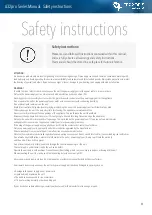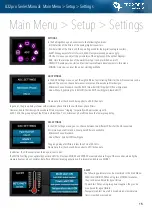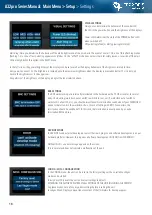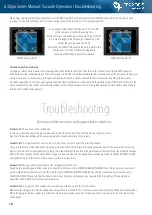
4
Welcome to the A32pro series. In this manual we would first like to welcome you with a virtual
tour. Let's start with a description of the individual front sections of an A32pro Dante, beginning
from the left. The front panels of the A32pro and A32pro Dante are identical in function:
Front View
A32pro Series Manual: Front View
Headphones outputs
The two independent headphones
outputs are driven by high-quality
amplifier components from Texas
Instruments. Depending on the
configuration, these can either
function as two independent stereo
outputs („unbalanced“) or operate in
balanced mode for use with high-end
headphones. For balanced operation,
each output is responsible for one
driver side of the headphones.
For balanced operation, you need a
balanced cable for the headphones -
of course, the headphones must also
support balanced operation due to
their design. To access the headphone
menu or the monitoring matrix, tap
the encoder wheel in the main menu
(analog I/O display). You will learn
more about the headphone menu in
the next chapters.
Section with device name, TFT screens
The area with the unit name and the company logo is
touch-sensitive and intended for special functions,
such as clearing the peak LEDs.
The four color screens, which are also touch-sensitive,
show both the status of the 32 analog inputs and outputs
and the status of the unit.
The status bar in the lower area represents the
following, starting from the left:
∙
Synchronisation source and sample frequency
∙
MIDI activity on the MIDI sockets, SFP module(s),
USB and Dante*.
∙
Status of power supply at inputs 1 & 2 Sync status of:
MADI SFP ports, ADAT ports, Dante interface* and BNC.
∙
Activity of the GPIO ports: The top row shows the four
inputs, the bottom row the four outputs.
∙
Number of the currently loaded preset
(* A32 Dante only)
Operating elements
The operating elements consist of the
following elements:
∙
Menu (three bars/„hamburger key")
∙
Back/Escape („X“ symbol)
∙
Encoder knob (touch sensitive)
∙
Power switch.
Please note that the touch keys and
the touch sensitivity of the encoder
are capacitive.
Operation with gloves may possibly
impair the touch functionality of the
screens.





































